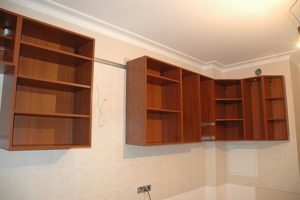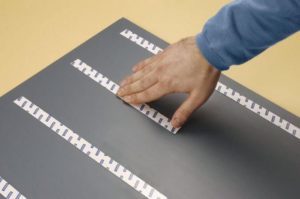 Old and boring pieces of furniture will sparkle with new colors if you decorate them a little. For example, you can breathe life into a cabinet, chest of drawers or wardrobe that has lost its former gloss.
Old and boring pieces of furniture will sparkle with new colors if you decorate them a little. For example, you can breathe life into a cabinet, chest of drawers or wardrobe that has lost its former gloss.
Preparatory stage before decorating the cabinet
The content of the article
- Preparatory stage before decorating the cabinet
-
How to decorate a cabinet with your own hands with a photo
- Wallpapering
- Stucco pattern
- Cloth cabinet decor
- Decoupage technique
- The use of craquelure varnish and gilding
- Mosaic decor
- Aging
- Mirror decoration
- What to consider when choosing a cabinet decor option
Before starting the process of transformation, a number of resuscitation works are necessary:
- Parsing. Remove all doors from a piece of furniture, pull out drawers and shelves from it. In a word, disassemble it into its components. Further work will take place with each of them individually.
- Fittings update. Thoroughly clean all metal elements from dirt and rust, or even replace them with new ones, depending on their condition and your design ideas.
- Surface preparation. Doors, shelves, housing completely clean from the old coating and dirt with a spatula, sandpaper, brush, rag and water.
Then carefully inspect all surfaces for chips and cracks. Defects must be repaired. Using mastic, repair minor damage, for more serious putty will be used.

After a course of restoration activities, you can start decorating with your own hands.
REFERENCE! Well-chosen fittings can become part of the decorative solution of the cabinet. Plastic, earthenware, copper, a huge variety of shapes and sizes - the choice is yours.
How to decorate a cabinet with your own hands with a photo
There are different approaches to the decoration of furniture.
Wallpapering
This simple, fast and inexpensive way of decoration has significant artistic potential. To implement it you will need:
- Fragments of wallpaper. The most important part is to pick up a wallpaper with a good pattern or pattern. They should not merge with the walls of the room, surpassing them in color saturation by at least a few tones.
- Wallpaper glue. Put it on the prepared surface of the furniture, place the wallpaper on top and smooth them so that there are no air bubbles and wrinkles anywhere.
- PVA glue and water-based varnish. After gluing, cover the wallpaper with a neat layer of PVA glue diluted with water. Apply a final coat of varnish.
IMPORTANT! Before proceeding with gluing, make sure that the combination of wallpaper fragments you invented looks harmonious. Draw a detailed sketch or attach what you are going to stick to the doors.

Stucco pattern
A three-dimensional pattern of plaster on the surface of the wardrobe accentuates attention on this piece of furniture, turns it into a highlight of the room. Technically, such a pattern is easy to perform with:
- Stencil. Make it yourself from cardboard, plastic or thick film. Often use floral or geometric ornaments, ethnic patterns, stylized images of animals and birds.
- Masking tape. Take the resulting workpiece and secure it with tape on the surface of the cabinet.
- Plaster. Apply decorative plaster on the surface of the furniture, on top of the stencil.
IMPORTANT! The stencil must be removed before the plaster dries!
After drying, treat the resulting composition with paint or acrylic varnish.

Cloth cabinet decor
A good alternative to wallpaper can be fabric. Textiles also have a wide range of colors and prints, and very expressive and effective compositions are made of it. To fix it on the surface of the sliding wardrobe you will need:
- PVA glue, furniture stapler or liquid nails. In a word, how to attach fabric blanks to the cabinet.
- Lacquer. To process the resulting surface. However, this stage is sometimes neglected. After all, textiles often have a characteristic, pleasant to the touch texture that you want to keep.

Decoupage technique
Decoupage is the transfer of patterns and patterns from ordinary napkins to the prepared surface, followed by fixing with varnish. In this way, create a whole collage on the doors and cabinet of your furniture for clothes.
IMPORTANT! This technique is best done on a light base. On this, no traces of glue are visible, and napkins can be easier to pick up. If the cabinet has dark doors and walls, paint it before decorating in white, beige or cream color.

The use of craquelure varnish and gilding
Using these two ingredients, a very interesting cracked paint effect is achieved. Furniture processed in this way takes the form of rare, exclusive antiquities. To achieve such a transformation you will need:
- Craquelure varnish. It is applied in two layers. After the first, wait until it partially dries and thickens. And only then paint over the surface again.
- Gilding. In the cracks formed in the varnish, rub the gilding with a sponge.
- Matt lacquer. It is needed for the final surface treatment in order to reliably fix the resulting coating with characteristic golden cracks.

Mosaic decor
Another type of relief and bright furniture design is a mosaic. It is made from fragments of ceramic products, buttons, shells, glass, pebbles and glue. Any small multi-colored elements from which you can add a pattern or picture will do.
IMPORTANT! Before fixing the pieces of the mosaic, outline their location on the plane of the cabinet - lay out the entire composition without the use of glue. And only after making sure that it looks harmonious, start work.

Aging
One of the methods of artificial aging of furniture - craquelure - is already described above. However, it is not the only possible solution. There are other options. For example, painting the cabinet with a large dry brush with a minimum of paint will create the effect of a peeling surface.

Mirror decoration
Mirror mosaics, carved from reflective materials, curly elements, stripes, geometric shapes - all this can become an adornment of your wardrobe. Such fragments are often used to hide furniture defects, while visually expanding the space.

What to consider when choosing a cabinet decor option
The interior of the room, cabinet features, your preferences - these are three fundamental things that affect the choice of how to decorate old furniture.
The interior sets the basic style, color scheme. For example, classic rooms go well with artificially aged objects, stucco patterns, gilding, restrained shades. The frivolous country will accept bright ethnic or floral patterns, textiles, decoupage technique. Laconic modern design solutions, such as hi-tech or loft, are perfectly complemented by furniture with mirror elements, mosaics.
Invent, try, decorate - and your house will be transformed, delighting you and surprising your guests.


